Jason Micheli's Blog, page 47
March 27, 2024
The Tomb is Not Empty; It's Full

Tamed Cynic is a reader-supported publication. If you appreciate the work, pay it forward by becoming a paid subscriber!
John 20.1-18
Notice the all important detail John reports for you: the empty tomb isn’t.
The tomb is not empty!
March 26, 2024
The Father's Faithfulness to his Faithful Son
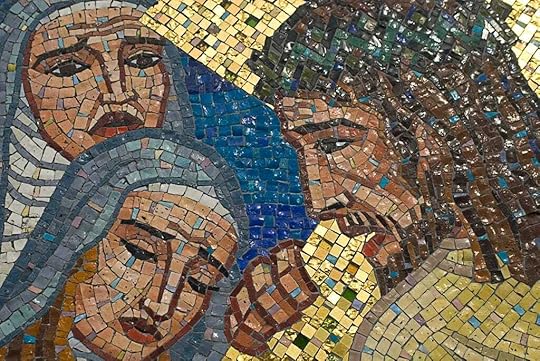
Tamed Cynic is a reader-supported publication. If you appreciate the work, pay it forward by becoming a paid subscriber!
Not all who witnessed Jesus’s trial and torture jeered at him or colluded with the authorities or turned a blind eye to the whole sordid affair. According to Luke, as Jesus trod his beleaguered path to Calvary, a multitude of women trailed behind him, mourning and lamenting for him.
Their public sorrow in his train is the closest anyone in the passion story comes to protesting, “Do not crucify him!”Yet hearing them weep, the Lord Jesus does not express gratitude for their solidarity.He turns to them and tells them they should instead weep for themselves and their children. Echoing the prophet Hosea, Jesus says, “If they do these things when the wood is green, what will happen when it is dry?” In the context of impending crucifixion, it means, “If Jesus is not spared the cruelty of the cross, how can God’s unfaithful people possibly hope to escape divine judgment?” Jesus’s sermon to the Daughters of Jerusalem is the seventh time in Luke’s Gospel that he has prophesied looming doom for Jerusalem and her temple.
Put differently, Jesus teaches and preaches his message to the last.
Just so, this is another predicate the Gospel narratives will allow us to draw from the death of Jesus:
The crucifixion puts Jesus’s life and teaching to the test.
Such a premise requires that we remember what is so widely forgotten among believers.
Namely:
The cross was important to the first Christians precisely because the cross was a problem for them.Therein is the irony of the Passion.
March 25, 2024
The Binding of Jesus

Tamed Cynic is a reader-supported publication. If you appreciate the work, pay it forward by becoming a paid subscriber!
Every year at Passover, to intimidate any pilgrims with insurrectionist aspirations, Pontius Pilate would travel with his Roman triumph from his seaside home at Caesarea Maritima into Jerusalem. There Pilate would spend the week in the palace of Caiphas, whose title was Chief Priest but whose role was more like Mayor. So it’s not surprising that Caiphas’s spacious palace came equipped with a prison in the dungeon.
In the dark hours after Passover, Caiphas’s municipal guard bring the bound and bleeding Jesus from Gethsemane on the Mt of Olives to the jail cell in Caiphas’s basement. I visited it last month. The guardroom contains wall fixtures to attach prisoners’s chains. There are holes in the stone pillars to fasten a prisoner’s hands and feet when he was flogged. Bowls carved in the floor to hold salt and vinegar in order to aggravate the pain of the prisoner’s the wounds. The prison cell itself is a pit carved out of bedrock, about twenty-five feet deep. The only access to the bottle-necked cell is through a shaft cut in the bedrock above. Having been beaten and flogged, on the morning of Good Friday Jesus was bound and then lowered through the hole in the rock by means of a rope harness. Once down there, there is no way out. There is no hope. There is no one. Just outside the palace is where Peter stands by a charcoal fire and says, “Jesus? Jesus of Nazareth, you say? Never heard of him.” For all Peter knew, Jesus may as well have been dead already, hidden like diamond deep in the dirt.
Jesus prays Psalm 22 from the cross.
It’s hard not to wonder if he prayed Psalm 88 in the dark stone hole of Caiphas’s basement,
“O lord God of my salvation, I have cried day and night before thee: Let my prayer come before thee: incline thine ear unto my cry; For my soul is full of troubles: and my life draweth nigh unto the grave. I am counted with them that go down into the pit: I am as a man that hath no strength: Free among the dead, like the slain that lie in the grave, whom thou rememberest no more: and they are cut off from thy hand. Thou hast laid me in the lowest pit, in darkness, in the deeps. Thy wrath lieth hard upon me, and thou hast afflicted me with all thy waves.”
If not earlier, there in the pit, that’s surely where Jesus began to cry, “My God, my God, why have you forsaken me?”
In Mark’s Gospel, the fourth word from the cross is Christ’s only word from the cross. As if, in the end, all that Jesus has to say from the cross is all we can say about the crucified Jesus. He’s been forsaken.No angel of the Lord will appear to stay the blade in hand. This time the Father will not spare his only beloved Son.
A short walk from Mt. Moriah, where Abraham took his son Isaac to murder him to honor the Lord, we push our Lord up a hill called Golgotha, carrying not a blade and wood for a fire but a cross and a hammer and nails.
Golgotha is Mt. Moriah without the ram in the bush or the angel to the rescue.Calvary is where the children of Abraham provide the innocent lamb for slaughter, another Father’s Son.
Good Friday is Abraham going through with it.My God, my God, why do we forsake him?
Why do we cast him into the pit and then crush him on a cross?
Imagine—
Imagine Abraham went through with the deed on Mt. Moriah. Imagine he did it. Imagine Abraham closing his eyes and raising his arm and plunging the knife. Imagine Isaac’s scream and the silence that would follow it, save for the bleating of a lost and forgotten ram amid the bushes. Imagine Abraham making his three day trek back down the mountain path to Isaac’s mother. And imagine a stranger approaching Abraham’s campfire that first night and, in the comfort of the darkness, Abraham confesses to this stranger his story about what he had believed god required, how it led him to violence and murder, how in his grief he knew now that heaven wept with him, how he had been blind and deaf, his faith had been unfaith, how as he plunged the knife he realized he had mistaken the gods for the true God. Imagine Abraham spilling out his shame, and then realizing he’d not even asked for the stranger’s name.
“Tell me your name,” Abraham asks. And the stranger lifts up his bowed head and pulls back his hood and replies, “Isaac.”
And then imagine Isaac showing Abraham his hands and his side.
This is the gospel.
 Get more from Jason Micheli in the Substack appAvailable for iOS and AndroidGet the app
Get more from Jason Micheli in the Substack appAvailable for iOS and AndroidGet the app
March 24, 2024
There is a Certain People
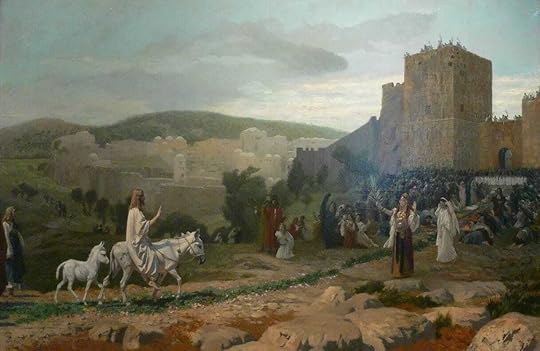
Tamed Cynic is a reader-supported publication. If you appreciate the work, pay it forward by becoming a paid subscriber!
Due to some logistical difficulties, I only have Joseph’s end of the recording of his sermon today for my congregation. I will say here, though, what I said in response to his offering:
Palm Sunday begins our journey through the Lord’s passion to the empty grave. Because of the promise and proclamation of Easter, Christians must say more than simply that “Jesus was a Jew.” Exactly to the extent that Jesus lives with death behind him, Christians must also confess that Jesus is a Jew. Therefore, if the church is to be the body of the Risen Jesus, then we cannot do so apart from fellowship and solidarity with Jews.
In that same spirit of friendship, here is Joseph’s sermon:
Psalm 118 & Isaiah 50
Palm Sunday is the calendar taking control of every Christian’s focus for the next seven days. The liturgy and Scriptural texts announce the final week of Jesus’ ministry, in preparation for the unique experience of God’s Love and Promise next Sunday’s of the Risen Christ. So why is a rabbi giving the sermon today, Palm Sunday 2024?
First, I hope you won’t be upset to learn, that the PALMS highlighted in the Gospel narrative were not used to welcome pilgrims before the Passover, but before the Festival of Tabernacles Sukkot, when the Palm Fern—the Lulav is one of the central ritual objects. Somehow the biblical festivals were conflated in the scriptural narrative, both significant pilgrimage moments became inadvertently combined.
Maybe the other reason that there is a rabbi here speaking on Palm Sunday is that
the calendar strangely overlaps with a minor Jewish festival, Purim, the Feast of Esther which began last night with the reading of the Book of Esther in synagogues. This morning at Alexandria’s Beth El Hebrew Congregation there is a Purim Carnival.
The calendar may have already confused you, why are Holy Week and Passover not connected this year as the narrative describes for this Thursday night. This year in the Jewish calendar has a Jewish Leap Year, which occurs 7 times in a 19-year cycle. The Jewish holiday calendar follows an ancient solar seasonal festival cycle, but also maintains a monthly lunar cycle; so, in order to keep everything in a reasonable order, we need a second of month of Adar which like this year makes Easter and Passover one month a part.
Regardless of the differences, Jews and Christians are both celebrating elements of their Scripture, today; in order to better understand what we are meant to learn, let us begin with a simple overview of Purim and the Book of Esther.
Purim like Palm Sunday is a calendar announcement, Passover comes in one month.
Esther is one of two books in the Hebrew Bible /Old Testament, that does not mention God, an ancient Persian folk-tale that produces a minor festival exactly one month before Passover, the key festival of the people. Many contemporary biblical scholars note that Esther is a book that was put into the Hebrew Bible as a warning about life in the Diaspora, as it portrays life that is radically different than all the other books in which the identity and destiny of the Israelites and Judeans is determined by God’s presence through priests and prophets. Esther becomes the queen after the King humiliates his queen during a drunken feast. Mordechai, Esther’s uncle helps save the King from a terrorist attack and his name is noted in a record of being worthy to honor.
The villain Haman, a descendent of Amalek provokes the King with the following classic antisemitic description: Haman then said to King Ahasuerus, “There is a certain people, scattered and dispersed among the other peoples in all the provinces of your realm, whose laws are different from those of any other people and who do not obey the king’s laws; and it is not in Your Majesty’s interest to tolerate them. If it please Your Majesty, let an edict be drawn for their destruction, Esther 3:8-9.
“There is a certain people…..and it is not in your Majesty’s interest to tolerate them.” The Book of Esther ends with the Queen exposing Haman’s evil plot and all that had been planned for the Jews of Shushan-ancient Persia, is done to Haman, his family and their followers.
A book without God’s intervention is read one month before the extraordinary origin story of Jews being freed from Egyptian slavery with 10 Divine plagues and the crossing of the Sea of Reeds. The Diaspora Jewish community needed to learn that their post-biblical destiny required even more than the slaves in Egypt!
So, my question on this Palm Sunday, is about the Judean—the Jew—Jesus who enters Jerusalem with his disciples to observe the Passover was he self-aware of being, ‘from among a certain people’? Surely the vulgar prejudice from an ancient Persian story is not as real as the Roman authorities and military who will eventually harass, arrest, judge and execute Jesus? Haman’s dismissive phrase, ‘a certain people’ hides the contempt and hatred that so many have historically acknowledged as being THE JEWS.
Today we read from the Hebrew Bible/Old Testament-Isaiah 50:4-5
My Sovereign GOD gave me a skilled tongue,
To know how to speak timely words to the weary.
Morning by morning, [God] rouses me,
Rousing my ear
To give heed like disciples.
My Sovereign GOD opened my ears,
And I did not disobey,
I did not run away.
The Prophetic charisma of Jesus is well described: the teacher, healer, and community organizer
is surely a source of political concern among those in Jerusalem. Was Jesus afraid? Did he realize that as one of ‘a certain people’, as one chosen to speak on behalf of the most vulnerable, his presence especially in Jerusalem during the festival of Passover was dangerous. The prophets of the Hebrew Bible were not intimidated in their own times, their pathos for God’s promises among the poor, orphans and widows threatened kings and priests; so too in his day Jesus would not have his prophetic insights silenced. Yet the Romans were like Haman refusing to even tolerate, those whose behaviors were different from those of any other people and who do not obey the king’s laws.
We share Psalm 118, from what we call the Hallel, Psalms 113-118 which is read on the three Pilgrimage Festivals. When we chant them in Hebrew attempting to imagine the sounds of the ancient Temple: 118:19 Open to me the gates of righteousness, that I may enter through them and give thanks to the LORD.
118:20 This is the gate of the LORD; the righteous shall enter through it.
118:24 This is the day that the LORD has made—let us exult and rejoice on it.
זֶה־הַ֭יּוֹם עָשָׂ֣ה יְהֹוָ֑ה נָגִ֖ילָה וְנִשְׂמְחָ֣ה בֽוֹ׃
הוֹד֣וּ לַיהֹוָ֣ה כִּי־ט֑וֹב כִּ֖י לְעוֹלָ֣ם חַסְדּֽוֹ׃
Praise GOD, who is good—whose steadfast love is eternal. 118:29
These are the same Hebrew words that Jesus—the Judean, the Jew---chanted as he and his disciples entered Jerusalem.
No matter what we have faced, been called….we have always shared in God’s joy. These two verses in particular are calming evidence that whether it is the Israelites or Jews who are defined as ‘ a certain people’ whose laws are different from those of any other people and who do not obey the king’s laws; they are also and always a community whose rituals and literature illuminate their endless devotion to God—and most assuredly God’s eternal commitment to these….both beloved and for some…that certain people not to be tolerated.
Why am I stressing this obnoxious phrase? As a guest it is probably rude to keep using it as if I were accusing anyone here of agreeing, even using it? The truth is that during Holy Week, Jews have historically experienced painful antisemitism from Christianity, “ that certain people” in Esther becomes “the Jews who crucified Jesus” in the Gospels. Since October 7 the range and intensity of global antisemitism but especially here in the US and most shockingly on university campuses has reopened the whole history of the hatred of Jews.
I am here today as your guest as a public statement of gratitude and a personal pledge of continued dialogue and solidarity with this community and its pastor, Jason Michelli. I am here to tell everyone and anyone, that even though I have been and still remain a member of that certain people, I refuse to be a quiet victim of the past or present, I am here to share our future, a future of a common ethical commitment that no amount of hatred from anyone will stop those who seek to build communities of care, understanding and being present to each other’s pain and hope.
One of the great interfaith leaders of the 20th century, Rabbi Abraham Joshua Heschel, teaches us:
What is urgently needed are ways of helping one another in the terrible predicament of here and now by the courage to believe that the word of the Lord endures forever as well as here and now; to cooperate in trying to bring about a resurrection of sensitivity, a revival of conscience; to keep alive the divine sparks in our souls, reverence for the words of the prophets, and faithfulness to the Living God. (No Religion is an Island) When we are gasping with despair, when the wisdom of science and the splendor of the arts fail to save us from fear and the sense of futility, the Bible offers us the only hope: history is a circuitous way for the steps of the Messiah. (Heschel, God In Search of Man, 238)
I shared Palm Sunday in the hope that when you are celebrating Easter’s unique blessings, you will remember that we share the eternal promise of the ultimate Messianic presence, for which we all still strive.
 Get more from Jason Micheli in the Substack appAvailable for iOS and AndroidGet the app
Get more from Jason Micheli in the Substack appAvailable for iOS and AndroidGet the app
March 23, 2024
Meeting One Another at a Shared Text

Tamed Cynic is a reader-supported publication. If you appreciate the work, pay it forward by becoming a paid subscriber!
Hello Friends,
Happy Saturday!
A couple of quick announcements:
Rabbi Joseph will be the preacher for my parish’s Palm Sunday worship tomorrow at 10:30 EST. You can catch it HERE.
The global gathering of the United Methodist Church kicks off in Charlotte on April 23. My pod posse partners will be hosting a live event the night before with my friend Tripp Fuller of Homebrewed Christianity. We have musicians and guests slated to join us and, given the location, there will be beer too. You can sign up HERE.
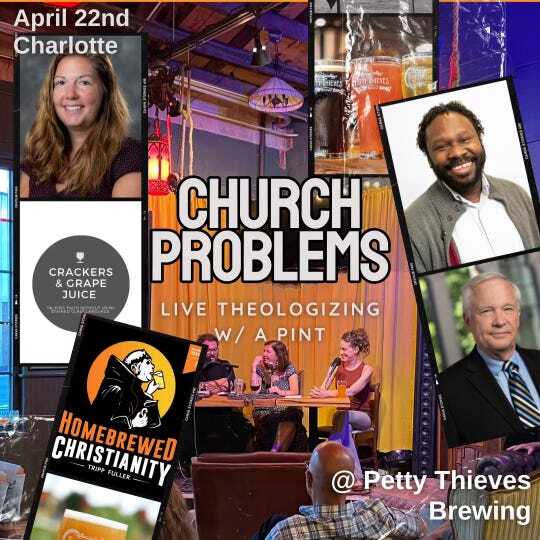 Show Notes
Show NotesSummary
In this conversation, Rabbi Joseph Edelheit and I discuss the importance of shared scripture and the need for a conscious return to joint heritage. They explore the connection between Israel and the Jewish people, as well as the role of certainty in current discourse. They emphasize the use of shared texts to foster humility, perspective, and critical thinking. The conversation also touches on the correlation between the decline in faith and the increase in anti-Semitism. They discuss the role of public schools in identity formation and the fear of being afraid. Overall, the conversation highlights the importance of revisiting and reframing the Hebraic heritage as a starting point for dialogue and understanding. This conversation explores topics related to Muslim dietary restrictions in America, the role of antagonism and fear in relation to difference, reframing Judeo-Christian values, the interpretation of the first commandment, engaging with the text, the detachment of the Bible from its people, the difficulty in acknowledging extremism, Christian nationalism as an extremism, reconnecting Jews and Christians, and reconstructing interfaith tours.
Takeaways
Shared scripture can serve as a common ground for dialogue and critical thinking.
The connection between Israel and the Jewish people is an important aspect of Jewish and Christian theology.
Certainty in discourse can hinder understanding and dialogue.
Using shared texts can foster humility, perspective, and critical reading skills.
Public schools play a role in identity formation and can be a space for engaging with diverse perspectives. Antagonism and fear often operate at the level of difference, and it is important to take the time to understand and engage with one another.
The golden rule should be understood in the context of Leviticus 19:18, which includes a prohibition against revenge and bearing grudges.
The first commandment should be reframed as a statement rather than a commandment, emphasizing the source and authorship of the Ten Utterances.
Engaging with the text requires careful examination and a willingness to challenge preconceived notions.
Extremism should be taken seriously and not dismissed or ignored, regardless of the religious or ideological context.
There is a need to reconnect Jews and Christians in a new context and foster dialogue and understanding between the two communities.
Interfaith tours and shared experiences can help promote pluralism and mutual understanding between Jews and Christians.
 Get more from Jason Micheli in the Substack appAvailable for iOS and AndroidGet the app
Get more from Jason Micheli in the Substack appAvailable for iOS and AndroidGet the app
March 22, 2024
The Devil is Too Laughable to be Taken Seriously

Tamed Cynic is a reader-supported publication. If you appreciate the work, pay it forward by becoming a paid subscriber!
From a wealthy New England family, William Congdon volunteered as an ambulance driver during World War II. He was the first American to enter the death camp at Bergen Belsen, images from which left an indelible impression on him. Inspired by the artwork he saw during his service in Europe, Congdon took up painting after the war and became one of the century’s most notable exemplars of abstract expressionism. In 1959, after a visit to Assisi, Congdon converted to Christianity and thereafter painted bleak iterations of the crucifixion as though both the cross and the concentration camp haunted him.
His most famous painting, 1960’s Crucifixion No. 2, renders Jesus as the only object to view. In it, there are no soldiers mocking Jesus nor any thieves deriding him or asking his mercy. There is no purple robe or chief priests. There is no crown of thorns or weeping mother. There is no crowd jeering him to come down from his cross; for that matter, there is no cross. His body itself is the cross, stretched out in the shape of T on a sheer black backdrop. As though nailed to nothingness, he is the solitary spectacle we are meant to behold.
Congdon’s artwork is certainly arresting and surely truthful in its bleak refusal of any beauty to be found behind Christ’s passion; however, the Gospel narratives themselves do not put Christ on display as much as everyone else who contribute to handing Christ his cross to carry to Calvary.
Pontius Pilate sends a man, whom he knows to be innocent, to a brutal and dehumanizing death. “Crucify him yourselves,” Pilate tells the chief priests, "I find no guilt in him.” Nevertheless, without a second thought, Pilate condemns Jesus to a manner of execution so ghastly the word crux was verboten on the lips of polite Roman citizens.
Pilate not Jesus is the one the scriptures put on display.Not only is Jesus not guilty, he alone is the righteous one.
But those who know of righteousness, the chief priests, they plead for his crucifixion. Under the law, the priests already possess the authority to put him to death. In fact, they’ve attempted to stone Jesus twice. It’s not that they lack the authority to put Jesus to death. It’s that they want Jesus to die a death only Rome can execute. It’s no longer enough for them to stone Jesus. They want Jesus to be crucified. According to the Book of Deuteronomy, “anyone hung on a tree is under God’s curse.” Thus, they want Jesus crucified because crucifixion will invalidate Jesus. They want more than the death of Christ. They want to nail Jesus’s Kingdom message into blessed oblivion.
They are the spectacle the scriptures want you to see.
When Pilate sarcastically arraigns the would-be king of this kingdom before the chief priests (“Behold, your King!”), the chief priests, those chosen from the tribe of Levi to intercede on behalf of the covenant people so that Israel would be a light to the nations, having no other god but Yahweh, exclaim, “We have no other king but Caesar.”
If Israel’s original failure in the Old Testament is the desire to have a king like the other nations, then Israel’s original sin happens here, not in the Garden but on Good Friday, when they choose the king named Caesar over the true God.
Jesus is not the one on display.
Perhaps this is why he is so poised before Pilate. In verse eleven, Jesus minimizes Pilate’s authority by suggesting the Father’s authority alone has brought Jesus before this judge.
Just as the Holy Spirit thrust Jesus before the tempter in the desert immediately following his baptism, the Father has handed him over to Pilate and the priests and brought him to the place the Gospel of John calls Gabbatha, the judgment seat.
For what purpose?
The Epistle to the Colossians claims that Christ in his passion unmasks the rulers and authorities and puts them on display in open shame.
Another question:
What is underneath the masks Jesus removes from those rulers?
A better question:
Who is the person behind their guises which Jesus unveils?
Precisely because the devil is a person without a self, an agency without substance, a being without a body— invisible, we require help to identify him.
In other words, to unmask Satan’s temptations Christ must be tempted by them.
March 21, 2024
The Zone of Interest
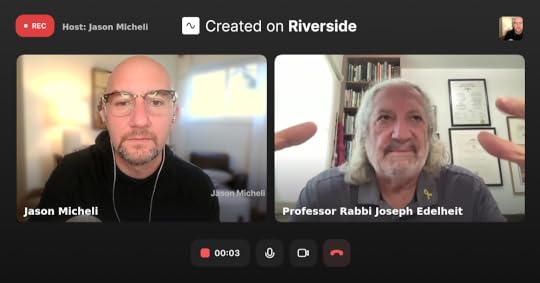
Tamed Cynic is a reader-supported publication. If you appreciate the work, pay it forward by becoming a paid subscriber!
Here is a recent conversation I had with Rabbi Joseph, in which we discussed a reflection on the Oscar-winning film, The Zone of Interest, and also an Axios report on an IDF soldier whose dead body was held hostage after October 7.
Show NotesSummary
In this conversation, Rabbi Joseph Edelheit and Jason Micheli discuss the importance of shared scripture and the need for a conscious return to joint heritage. They explore the connection between Israel and the Jewish people, as well as the role of certainty in current discourse. They emphasize the use of shared texts to foster humility, perspective, and critical thinking. The conversation also touches on the correlation between the decline in faith and the increase in anti-Semitism. They discuss the role of public schools in identity formation and the fear of being afraid. Overall, the conversation highlights the importance of revisiting and reframing the Hebraic heritage as a starting point for dialogue and understanding. This conversation explores topics related to Muslim dietary restrictions in America, the role of antagonism and fear in relation to difference, reframing Judeo-Christian values, the interpretation of the first commandment, engaging with the text, the detachment of the Bible from its people, the difficulty in acknowledging extremism, Christian nationalism as an extremism, reconnecting Jews and Christians, and reconstructing interfaith tours.
Takeaways
Shared scripture can serve as a common ground for dialogue and critical thinking.
The connection between Israel and the Jewish people is an important aspect of Jewish and Christian theology.
Certainty in discourse can hinder understanding and dialogue.
Using shared texts can foster humility, perspective, and critical reading skills.
Public schools play a role in identity formation and can be a space for engaging with diverse perspectives. Antagonism and fear often operate at the level of difference, and it is important to take the time to understand and engage with one another.
The golden rule should be understood in the context of Leviticus 19:18, which includes a prohibition against revenge and bearing grudges.
The first commandment should be reframed as a statement rather than a commandment, emphasizing the source and authorship of the Ten Utterances.
Engaging with the text requires careful examination and a willingness to challenge preconceived notions.
Extremism should be taken seriously and not dismissed or ignored, regardless of the religious or ideological context.
There is a need to reconnect Jews and Christians in a new context and foster dialogue and understanding between the two communities.
Interfaith tours and shared experiences can help promote pluralism and mutual understanding between Jews and Christians.
 Get more from Jason Micheli in the Substack appAvailable for iOS and AndroidGet the app
Get more from Jason Micheli in the Substack appAvailable for iOS and AndroidGet the app
March 20, 2024
What is the Gospel Meant to Do to Its Hearers?
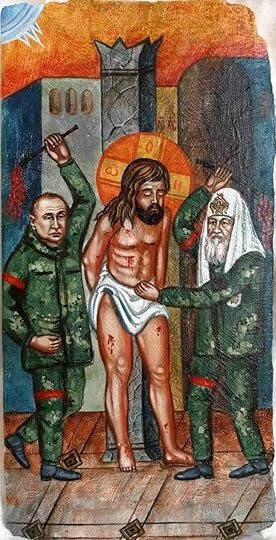
Tamed Cynic is a reader-supported publication. If you appreciate the work, pay it forward by becoming a paid subscriber!
The lectionary for this Palm Sunday assigns the church Psalm 118, a prayer whose answer the welcoming crowds impute to Jesus as he rides a colt into Jerusalem.
Every year during Passover week Jerusalem would be filled with approximately 200,000 Jewish pilgrims. Nearly all of them, like Jesus’s friends and family, would’ve been poor. Throughout that Holy Week these thousands of pilgrims would remember how they’d once suffered under a different empire and how God had heard their cries and sent someone to save them.
“Hosanna!” they’d shout for Messiah, quoting Psalm 118, “Save us!”
Every Passover therefore was a possible inflection point. Flexing his political muscle, every year at the beginning of Passover week, Pontius Pilate would journey from his seaport home in the west to Jerusalem, escorted by a military triumph, a parade of horses and chariots and armed troops and bound prisoners, all led by imperial banners that declared “Caesar is Lord.” A gaudy but unmistakeable display of power.
Only one year, at the beginning of that same week, Jesus comes from the east. His “parade” starts at the Mt of Olives, two miles outside the city, the place where the prophet Zechariah had promised God’s Messiah would one day usher in a victory of God’s People over Israel’s enemies, thereby establishing peace.
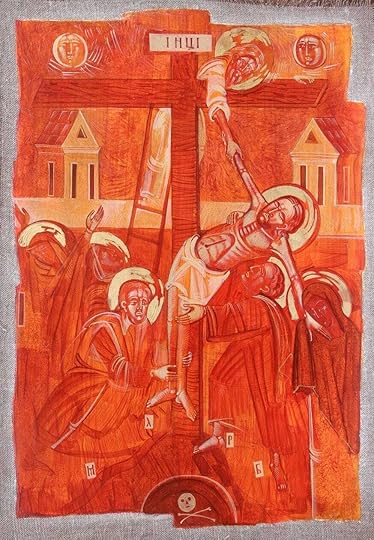
For those who think Christianity is primarily information about access to heaven and believe that Jesus is Secretary of Afterlife Affairs, Palm Sunday is an uncomfortably and overtly political occasion. The passages assigned for Palm Sunday will not abide the assumption that the good news of the gospel is little more than a salve for weary souls.
Palm Sunday marks Jesus’s penultimate, prophetic mockery of Rome’s pretensions. And no reader of the Old Testament can miss that the defeat of Israel’s enemies was, just so, the simultaneous defeat of her enemies’s gods.Thus—
The gospel is more than comfort for sinners.
The gospel is more than faith-based morals for our politics.
The gospel is more than time-tested principles for our personal projects.
The gospel is a summons.
We spend a lot of time in the church attempting to clarify the answer to the question, “What is the gospel?” And at a time and in a denomination where the answer to that question is increasingly confused, it’s an appropriate question to ponder.
But the answer to the question, “What is the gospel?” will always only be incomplete if we cannot also answer a corollary question, “What is the gospel supposed to do to its hearers?” What is the Gospel meant to do on its hearers?
March 19, 2024
Fear and Shamelessness
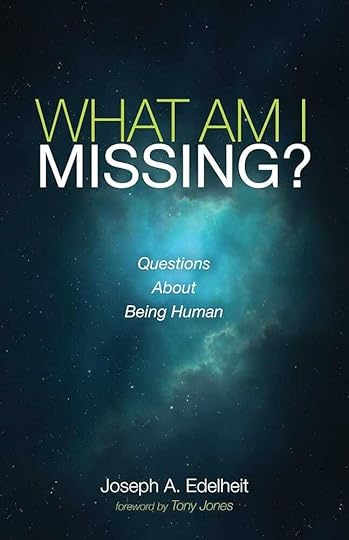
Tamed Cynic is a reader-supported publication. If you appreciate the work, pay it forward by becoming a paid subscriber!
Show Notes:SummaryIn this conversation, we discuss the stories of David and Esther in the Hebrew Bible. They explore the enigmatic passage in Genesis 2.25 about Adam and Eve's lack of shame, and how shame enters the human experience. They delve into the story of David and Bathsheba, highlighting David's shameless abuse of power and the consequences of his actions. The conversation also touches on the significance of the unnamed child in the story and the inclusion of these narratives in the Bible. The discussion concludes with reflections on the relevance of David's story in today's world and the importance of self-awareness and accountability. In this conversation, Rabbi Joseph Edelheit and Jason Micheli discuss the ambiguity of Psalm 51 and the Jewish expectation for the Messiah. They explore the connection between King David and Jesus, as well as the significance of the book of Esther and the festival of Purim. They delve into the themes of fear, power, and human nature in the book of Esther, and the lessons it offers for navigating difficult passages in the Bible. They also discuss the role of biblical characters as examples to emulate and the importance of embracing our humanity.
TakeawaysThe Hebrew Bible includes stories that unabashedly depict the flaws and shameless actions of its characters, highlighting the human condition and the need for self-critique.
The story of David and Bathsheba serves as a powerful example of the abuse of power and the consequences of shameless behavior.
The inclusion of these stories in the Bible challenges the notion of cancel culture and emphasizes the importance of recognizing our own flaws and the potential for redemption.
The story of David ultimately points to the redemptive power of God and the significance of ordinary people in God's plan. The book of Esther offers lessons on fear, power, and human nature.
The Jewish expectation for the Messiah was one like King David.
The book of Esther is a diaspora folktale added to the Bible as a warning.
The Bible contains difficult and messy stories that reflect the complexity of human nature.
 Get more from Jason Micheli in the Substack appAvailable for iOS and AndroidGet the app
Get more from Jason Micheli in the Substack appAvailable for iOS and AndroidGet the app
March 18, 2024
He Came Preaching the Pardon of God

Tamed Cynic is a reader-supported publication. If you appreciate the work, pay it forward by becoming a paid subscriber!
We’re in the twilight of Lent, a time every year when Christians— preachers especially— wrestle in earnest with the question at the heart of the Church’s faith, “Why was Jesus Christ crucified?”
The Apostle Paul says we all have the law tattooed on our hearts. We just can’t help ourselves. We’re hard-wired to think in terms of merit and demerit, earning and deserving, cause and effect. It’s not surprising, therefore, that just as we’re hard-wired to want a preacher to exhort us in Jesus’s name, we also want a preacher to explain to us the reason for his death. The language of the law is not imprecise.
Any account, on God’s side of the ledger, that necessitates the crucifixion— God’s honor, for example— makes the law almighty over the God who has told us he is slow to anger, rich in mercy, and abounding in steadfast love.
Even if you’ve never been to seminary, you know what the church has termed (with an appropriate amount of hedging) “atonement theories.”
Jesus paid it all, the hymn sings. In Christ alone, “the wrath of God was satisfied” a contemporary song summaries the old, old story. At least the roadside signs and Christian kitsch are more honest about the transactional nature of these theories, reducing the Gospel story to a math equation, “1 cross + 3 nails = 4given.”
Stanley Hauerwas often quips about Easter:
“If you had an explanation for the resurrection, you should worship that explanation not Jesus Christ.”
Likewise, if there’s an eternal law which requires Jesus to solve the roadside equation, then we should worship that all-determinative law rather than Jesus or the other members of the Trinity.
Martin Luther called such explanations of the crucifixion “covering the cross with roses,” for they hide the brute and immediate fact that Jesus dies on the cross because we killed him.
Perhaps more critically, “theories” of atonement that make the cross a legal necessity on the way to divine pardon ignore the clear testimony of the evangelists in the Gospels.
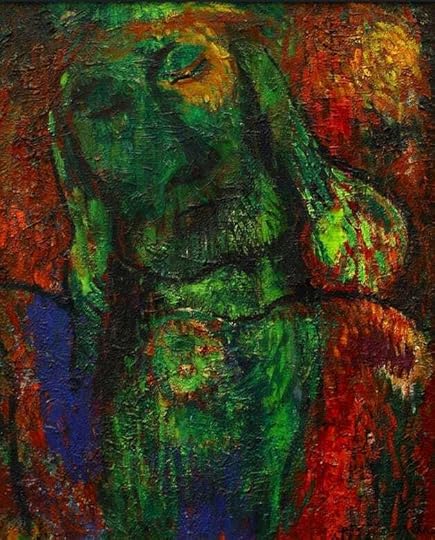
Jesus doesn’t die so that God can forgive us.
Jesus comes proclaiming the forgiveness of God.
Christ preaches the pardon of God from the very start of the Gospel— hell, this is why we killed him!
In a justly famous sermon, “Jesus Died for You,” the theologian Gerhard Forde quickly summarizes the various atonement motifs at work in the history of the Church. He considers especially the most prominent theme in Christian interpretation, Substitution.
Hewing close to his text, Forde says:
“All we need to do is to look carefully at what actually happened…“God didn’t have to be paid to forgive, but announced forgiveness through Jesus to begin with. But that is when the trouble starts. For we would not have it… we don’t need elaborate theories or doctrines of the atonement to see why his death is for us. We lay hands on him and put him to death. And he does not stop us.”
Jason Micheli's Blog
- Jason Micheli's profile
- 13 followers



